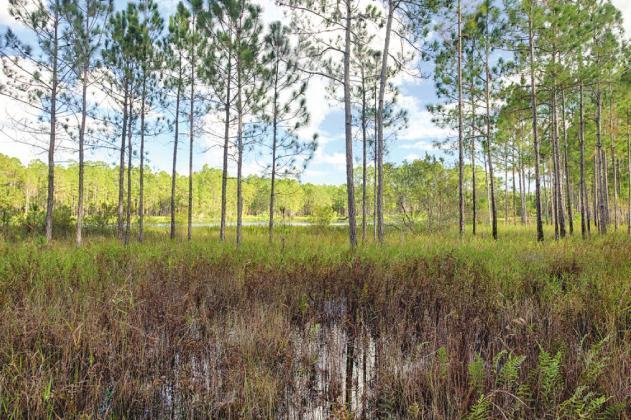Osceola County dropped the Orange County Charter Review Committee from its lawsuit to “void” Orange County voters’ decision on Split Oak Forest last November.
But Osceola is still suing Orange County to do the same thing.
“Attorneys for Osceola feel the lawsuit is more properly an issue between the two counties, Orange and Osceola, and that the Charter Review Committee no longer needs to be a party since it was dissolved after the November election. The lawsuit against Orange County to void Orange County Charter Amendment 2, will continue,” according to a news release from Osceola County.
The referendum prevents Orange County commissioners from altering rules protecting Split Oak Forest from development and won 86 percent of the vote.
However, Osceola County considers it “unconstitutional” on multiple fronts.
“The most egregious of those is that it misled voters, implying that it could limit road construction without advising them such easement restrictions are prohibited under state law and failing to advise them that rather than protecting Split Oak Preserve as it described itself, it made it unsustainable by preventing its agreed upon dramatic expansion which would double its size,” according to Osceola County officials.
At the crux of the lawsuit is the future of a planned Osceola Parkway expansion through Split Oak Forest, a 1,600-acre conservation area that straddles Osceola and Orange counties.
The two counties jointly purchased Split Oak 20 years ago with public funds including grants from the state, and the Florida Fish and Wildlife Conservation Commission has maintained it over the years. The original agreement says the property is to be held “in perpetuity” as a public conservation space.
But county and regional transportation officials said extending Osceola Parkway through part of the forest is necessary to accommodate increased traffic in the once-rural area along Narcoossee Road. It’s where the two counties connect and where tens of thousands of new homes have been built, are under construction or are soon-to-be developed.
Orange and Osceola commissioners have approved a plan for the expansion developed by the Central Florida Expressway Authority (CFX). That route would impact 160 acres of the forest but provides a land donation from the development company building in the area.
CFX began considering the project at public meetings in 2017 and it’s since been at the center of a heated public debate, which culminated in the ballot initiative in Orange County last year.
Local homeowners near Lake Ajay and Lake Mary Jane have pushed back on plans that would have impacted their neighborhoods. And environmental activists have pushed back on plans that would take Osceola Parkway through Split Oak.
In May 2018, the Osceola County Commission agreed to work with Tavistock Development Company to “lead a public process (both local and state) to get the associated land in the Split Oak Forest released for right-of-way” for the road.
Tavistock, the company that developed Lake Nona, is building the massive Sunbridge community in the area and has lobbied for the road’s expansion. The company has pledged to donate 1,550 acres of undeveloped land in exchange for the 160 acres of Split Oak needed for the road.
Friends of Split Oak Forest has rallied against any plan that touches the forest from the beginning. The group helped get the 2020 charter amendment on the ballot in Orange County and has led the charge to keep the forest from being altered and to uphold the original agreement that protects it from development.
“This is not good government. This is not government that represents the best interest of the people,” said Valerie Anderson, founder of Friends of Split Oak Forest.
Still, officials from the two counties and the CFX Governing Board (which includes local county commissioners) have said the planned road through Split Oak is the most equitable solution after considering many other alternatives.
“The chosen route came after years of public input and careful study by leading experts using scientific analysis, public input, and ultimately multiple public votes by elected officials in Osceola and Orange counties,” the Osceola County news release states.
The Osceola Parkway extension brings significant positives to many stakeholders, including environmentalists, area residents, commuters and those in the future that find new economic opportunities linked to it.”
Osceola County’s lawsuit against Orange County targets the voter-approved amendment that restricts Orange County commissioners from altering rules protecting Split Oak.
“The amendment attempts to reverse a science-driven decision by Orange and Osceola counties, according to the Osceola news release.
Anderson said she doesn’t buy it.
“The point of a county charter and county charter amendments is to tell the county government what it can and can’t do,” she said. “I don’t understand how Osceola can argue (the Orange County charter amendment) is unconstitutional. Where in the Constitution does it say county government can do whatever they want?”
A court date for the Osceola-Orange lawsuit on Split Oak has not been set.
Meanwhile, the ultimate fate of Split Oak Forest is up to the Florida Communities Trust Governing Board, which works under the Florida Department of Environmental Protection. In order for the road to be built, the FCT board must approve an amendment to the Split Oak agreement filed by Osceola and Orange counties that FCT staff is now reviewing.




